Online Class: Understanding and Managing Your Personal Credit

no certificate
with CEU Certificate*
-
15Lessons
-
31Exams &
Assignments -
5Hours
average time -
0.5CEUs
Course Description
Mastering Credit Management: Your Guide to Financial Freedom
In today's complex financial landscape, credit plays a pivotal role in shaping our lifestyle choices, aspirations, and opportunities. From buying a dream home, driving the latest car, or navigating day-to-day expenses, credit undeniably influences our financial trajectory. However, an overwhelming number of individuals find themselves ensnared in the complexities of credit, often leading to a suffocating cycle of debt that feels almost insurmountable.
While falling into debt might seem easy, especially given today's economic challenges, climbing out of it demands dedication, knowledge, and the right strategy. Our course provides an illuminating path to not only managing but mastering your credit, offering you the tools and insights to regain control of your financial well-being.
Recent data highlights an alarming trend: an increasing number of individuals are leveraging credit to sustain their lifestyles, pushing them closer to financial precarity. But it's never too late to turn things around. Your financial destiny is in your hands, and with the right guidance, you can shift from feeling submerged in debt to standing tall on solid financial ground.
Course Overview:
-
Understanding Credit: Dive deep into the very essence of credit—how it works, its implications, and its importance in our daily lives.
-
Deciphering Credit Scores: Learn what goes behind that three-digit number, from how it's calculated to its profound impact on your borrowing capabilities.
-
Credit Influence Factors: Grasp the myriad elements that can sway your credit score, from loan applications to payment histories.
-
Navigating Credit Cards: Unpack the intricacies of credit cards—the boon and bane of modern finance.
-
Demystifying Foreclosure and Bankruptcy: Understand these dire financial situations, their causes, implications, and ways to navigate them.
-
Decoding Debt to Income Ratio: Learn how this crucial ratio can influence your borrowing potential and ways to optimize it.
-
The Debt Spiral: Recognize the early signs of this treacherous cycle and strategies to prevent its onset.
-
Guidance on Debt Counseling & Consolidation: Discover professional avenues to manage and reduce your debt effectively.
-
Living Within Your Means: Embrace sustainable financial habits that prioritize needs over wants.
-
Budgeting Essentials: Master the art of crafting and adhering to a budget, ensuring every dollar is accounted for.
-
Staying Financially Disciplined: Cultivate habits and mindsets that safeguard you from future debt pitfalls.
-
Navigating Credit Reports: Learn to read, interpret, and utilize these crucial financial documents to your advantage.
-
Rectifying Credit Errors: Equip yourself with the knowledge to identify and rectify inaccuracies that could be pulling your credit score down.
Rebuilding and maintaining a strong credit profile isn't a sprint but a marathon. It demands consistent effort, informed decisions, and sometimes even a touch of sacrifice. However, the rewards—a stress-free financial life, enhanced borrowing capabilities, and a sense of accomplishment—are truly invaluable.
Our course amalgamates expert knowledge, actionable strategies, and real-life examples to empower you with a roadmap to credit excellence. Having already assisted countless individuals in enhancing their credit scores and reshaping their financial destinies, we're confident that with commitment and our guidance, you too can experience the liberating feeling of financial freedom.
Join us on this transformative journey and reshape your financial future. Your path to credit mastery starts here.
Course Motivation
So, what exactly is credit and how did it become something that we all use and need throughout our day-to-day lives?
Essentially, credit is the granting of a loan from one party to another, where the second party is not required to reimburse the first party in full immediately, but can repay over a certain set period of time. This is debt, and it affects nearly everyone in the Western world. The first party is always referred to as the creditor or lender, while the second party is the debtor or borrower. Like a relationship between certain fish and sharks, or birds and crocodiles, these two need each other. The lender needs to have someone to lend to, or they cease to exist, so the debtor is their other half, their Yang to the Yin. You probably get the idea.
Typically, any large movement of financial capital is dependent on credit, and this becomes dependent on the reputation of the individual for how much credit they are allowed to borrow, often called creditworthiness.
Credit has become a huge part of our lives and it is actually very hard to get away from it. Many companies these days will offer credit to their customers as part of a purchase agreement. It is rare these days, when you make a payment at the till, that you are not asked if you want to get the company's credit card for cheaper purchases. Many choose to go with these store credit cards on impulse alone, which can have problems for many in the future.
There are several forms of credit that a person or company can have, with the most common being:
-
Credit Cards
-
Mortgages
-
Car Loans
-
Lines of Credit
-
Leases
-
Loans
These are just a few of the types of credit a company or person can have, but they are by far the most common of all the types.
In the United States, credit is a way of life, but what are the stats that relate to it? How do you compare as a consumer to other consumers with your credit situation? Are you above, or below the average, and do you have something to worry about?
In terms of total consumer credit on credit cards, it equals an astonishing $1.7 trillion. Each American has an average of about $8,562 credit card debt at this very moment, and the total finance charges that are paid by Americans each year is about $50 billion.
Most households -- 78 percent -- are deemed credit worthy by the lending industry, but that being said, about 1.3 million people declare bankruptcy each year.
One very good indication of how much people are in debt is their debt-to-income ratio. This ratio, which will be addressed later in more detail, determines just how much someone pays from their net income toward debt payments. Right now, the average ratio is about 14 percent. That means that the average consumer uses 14 percent of their yearly income to pay their mortgage, as well as auto and personal loans, and credit cards. That means that if you make $33,000 per year, net-income, then you pay $4,620 each year in debt payments.
Credit is a unique beast. It is something that everyone uses, and everyone needs, but it can be a double-edged sword for many. While it can give you a house, car, and items you really cannot afford, it can also spiral out of control and begin to hold you down as you attempt to rise above the debt water before you are swept away.
Credit is something that you have to deal with, and sometimes you deal with it the wrong way and you lose your credit. What do you do in this situation? Well, thankfully credit is something that can be repaired. You can fix your credit; it just takes time. That is the one good thing about credit, it is not set in stone and it can be repaired. In this course, you will find out how.
- Completely Online
- Self-Paced
- 6 Months to Complete
- 24/7 Availability
- Start Anytime
- PC & Mac Compatible
- Android & iOS Friendly
- Accredited CEUs
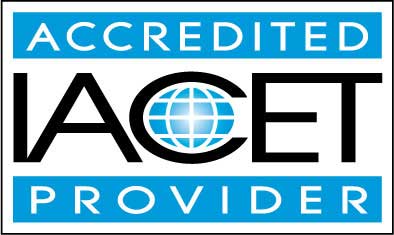
Course Lessons
Lesson 1: What Is Credit?
Forms of Credit
Credit Stats 9 Total Points
 Lesson 1 Video
Lesson 1 Video Lesson discussions: Reasons for Taking this Course
Lesson discussions: Reasons for Taking this Course Complete Assignment: An Introduction
Complete Assignment: An Introduction Assessment: Quiz for Lesson 1 : What Is Credit?
Assessment: Quiz for Lesson 1 : What Is Credit?
Lesson 2: What Is A Credit Score?
 Lesson 2 Video
Lesson 2 Video Complete Assignment: Lesson 2: Credit Scores
Complete Assignment: Lesson 2: Credit Scores Assessment: Quiz for Lesson 2 : What Is A Credit Score?
Assessment: Quiz for Lesson 2 : What Is A Credit Score?
Lesson 3: How Is Your Credit Affected?
 Lesson 3 Video
Lesson 3 Video Complete Assignment: Lesson 3: Factors Affecting Credit
Complete Assignment: Lesson 3: Factors Affecting Credit Assessment: Quiz for Lesson 3 : How Is Your Credit Affected?
Assessment: Quiz for Lesson 3 : How Is Your Credit Affected?
Lesson 4: Credit Cards
 Lesson 4 Video
Lesson 4 Video Complete Assignment: Lesson 4: Credit Cards: an overview
Complete Assignment: Lesson 4: Credit Cards: an overview Assessment: Quiz for Lesson 4 : Credit Cards
Assessment: Quiz for Lesson 4 : Credit Cards
Lesson 5: Foreclosure
 Lesson 5 Video
Lesson 5 Video Complete Assignment: Lesson 5: Dealing with Foreclosure
Complete Assignment: Lesson 5: Dealing with Foreclosure Assessment: Quiz for Lesson 5 : Foreclosure
Assessment: Quiz for Lesson 5 : Foreclosure
Lesson 6: Bankruptcy
Bankruptcy and Credit Score
Bankruptcy Statistics 34 Total Points
 Lesson 6 Video
Lesson 6 Video Complete Assignment: Lesson 6: Dealing with Bankruptcy
Complete Assignment: Lesson 6: Dealing with Bankruptcy Assessment: Quiz for Lesson 6 : Bankruptcy
Assessment: Quiz for Lesson 6 : Bankruptcy
Lesson 7: Debt-to-Income Ratio
Why Does It Matter?
How Do You Lower It?
What Is The Best Ratio?
What Is The Worst Ratio? 34 Total Points
 Lesson 7 Video
Lesson 7 Video Complete Assignment: Lesson 7: Detailing Debt to Income Ratio
Complete Assignment: Lesson 7: Detailing Debt to Income Ratio Assessment: Quiz for Lesson 7 : Debt to Income Ratio
Assessment: Quiz for Lesson 7 : Debt to Income Ratio
Lesson 8: The Debt Spiral
Getting Out of the Spiral 34 Total Points
 Lesson 8 Video
Lesson 8 Video Complete Assignment: Lesson 8: Getting out of Debt Spiral
Complete Assignment: Lesson 8: Getting out of Debt Spiral Assessment: Quiz for Lesson 8 : The Debt Spiral
Assessment: Quiz for Lesson 8 : The Debt Spiral
Lesson 9: Debt Counseling
A Brief History of Credit Counseling
A Good Choice?
Be Careful 35 Total Points
 Lesson 9 Video
Lesson 9 Video Complete Assignment: Lesson 9: Need for Debt Counseling
Complete Assignment: Lesson 9: Need for Debt Counseling Assessment: Quiz for Lesson 9 : Debt Counseling
Assessment: Quiz for Lesson 9 : Debt Counseling
Lesson 10: Debt Consolidation
When To Get It
Predatory Lending
Loans Versus Debt Consolidation Additional lesson topics: What is Debt Consolidation ? 35 Total Points
 Lesson 10 Video
Lesson 10 Video Complete Assignment: Lesson 10: Consolidating Your Debt
Complete Assignment: Lesson 10: Consolidating Your Debt Assessment: Quiz for Lesson 10 : Debt Consolidation
Assessment: Quiz for Lesson 10 : Debt Consolidation
Lesson 11: Living Within Your Means
Credit Is Not Cash
Limiting Purchases
Planning Ahead
Sell What Is Not Needed
Think About Purchases
Go for Lower Interest Rates 34 Total Points
 Lesson 11 Video
Lesson 11 Video Complete Assignment: Lesson 11: Financial Planning
Complete Assignment: Lesson 11: Financial Planning Assessment: Quiz for Lesson 11 : Living In Your Means
Assessment: Quiz for Lesson 11 : Living In Your Means
Lesson 12: Budgeting
Making a Budget
Things That Can Ruin a Good Budget
What About Slip-Ups? 35 Total Points
 Lesson 12 Video
Lesson 12 Video Complete Assignment: Lesson 12: Importance of Systematic Budgeting
Complete Assignment: Lesson 12: Importance of Systematic Budgeting Assessment: Quiz for Lesson 12 : Budgeting
Assessment: Quiz for Lesson 12 : Budgeting
Lesson 13: Tips for Staying on Track
Can it Be Done? 34 Total Points
 Lesson 13 Video
Lesson 13 Video Complete Assignment: Lesson 13: Staying On Track
Complete Assignment: Lesson 13: Staying On Track Assessment: Quiz for Lesson 13 : Tips For Staying On Track
Assessment: Quiz for Lesson 13 : Tips For Staying On Track
Lesson 14 : Credit Reports
How Often to Check?
Who Provides Them?
How Many Use Credit Reports?
Advantages of Credit Reports 34 Total Points
 Lesson 14 Video
Lesson 14 Video Complete Assignment: Lesson 14: Advantage of Credit Reports
Complete Assignment: Lesson 14: Advantage of Credit Reports Assessment: Quiz for Lesson 14 : Credit Reports
Assessment: Quiz for Lesson 14 : Credit Reports
Lesson 15: Credit Errors
How to Prevent Them
Fix the Errors
Keeping Detailed Records
How Much Can It Damage? 98 Total Points
 Lesson 15 Video
Lesson 15 Video Lesson discussions: Let us know what you think of this course; Program Evaluation Follow-up Survey (End of Course); Course Comments
Lesson discussions: Let us know what you think of this course; Program Evaluation Follow-up Survey (End of Course); Course Comments Complete Assignment: Lesson 15: Looking out for Credit Errors
Complete Assignment: Lesson 15: Looking out for Credit Errors Assessment: Quiz for Lesson 15 : Credit Errors
Assessment: Quiz for Lesson 15 : Credit Errors Assessment: The Final Exam
Assessment: The Final Exam
Learning Outcomes
- Define what credit is.
- Describe what a credit score is.
- Describe what affects your credit score.
- Define what a credit card is how that affects your credit score.
- Describe the foreclosure process and what it does to your credit report.
- Describe the bankruptcy process and how that affects your credit report.
- Define the Debt to Income Ratio.
- Summarize how people end up in a 'debt spiral'.
- Summarize the pros and cons of debt counseling.
- Summarize the pros and cons of debt consolidation.
- Summarize methods to live within your means.
- Create a budget.
- Request your credit reports.
- Summarize methods to correct errors on your credit reports.
- Demonstrate mastery of lesson content at levels of 70% or higher.
Additional Course Information

- Document Your Lifelong Learning Achievements
- Earn an Official Certificate Documenting Course Hours and CEUs
- Verify Your Certificate with a Unique Serial Number Online
- View and Share Your Certificate Online or Download/Print as PDF
- Display Your Certificate on Your Resume and Promote Your Achievements Using Social Media
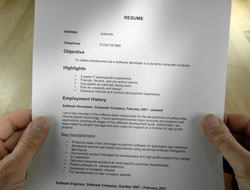
Choose Your Subscription Plan
No Certificate / No CEUs
This course only
| Includes certificate | X |
| Includes CEUs | X |
| Self-paced |

|
| Instructor support |

|
| Time to complete | 6 months |
| No. of courses | 1 course |
Certificate & CEUs
This course only
| Includes certificate |

|
| Includes CEUs |

|
| Self-paced |

|
| Instructor support |

|
| Time to complete | 6 months |
| No. of courses | 1 course |
Certificates & CEUs
Includes all 600+ courses
| Includes certificate |

|
| Includes CEUs |

|
| Self-paced |

|
| Instructor support |

|
| Time to complete | 12 Months |
| No. of courses | 600+ |
Certificates & CEUs
Includes all 600+ courses
| Includes certificate |

|
| Includes CEUs |

|
| Self-paced |

|
| Instructor support |

|
| Time to complete | 24 Months |
| No. of courses | 600+ |
Student Testimonials
- "Very available and provided feedback on all my lessons." -- David N.
- "Great subject! Great instructor! I love Universal Class!" -- Carmen R.
- "Every part of the course was helpful to me. I used to deal with credit repair years ago so this was like a refresher course.It was a very helpful experience." -- Hector R.
- "The court was perfect. HE'S a Great instructor." -- Janet D.
- "Very helpful information about repairing credit. I enjoyed taking this course." -- Marie C.
- "My instructor was the greatest. He always got back with me in a timely matter and gave me excellent answers. I hope I get his for all my others classes that I will be taking with Universal Class." -- Glenda W.
- "This class teaches more than Managing Credit. It deals with debt, debt to equity, debt to income ratios, budgeting, and more. I would recommend it to a lot of young people who are starting out before they become innudated with debt." -- DrEarl W.
- "the instructor is very diligent. Always communicated the results in a timely fashion." -- Nestor M.
Related Courses
-
 32 hours
3.2 CEUs
Economics: Complete Edition
+ More Info
32 hours
3.2 CEUs
Economics: Complete Edition
+ More Info
-
 29 hours
2.9 CEUs
Human Resources Productivity Course Bundle
+ More Info
29 hours
2.9 CEUs
Human Resources Productivity Course Bundle
+ More Info
-
 36 hours
3.6 CEUs
Ultimate Secretary Training Bundle
+ More Info
36 hours
3.6 CEUs
Ultimate Secretary Training Bundle
+ More Info
-
 3 hours
0.3 CEUs
Business Credit 101
+ More Info
3 hours
0.3 CEUs
Business Credit 101
+ More Info
-
 5 hours
0.5 CEUs
Project Management 101
+ More Info
5 hours
0.5 CEUs
Project Management 101
+ More Info
-
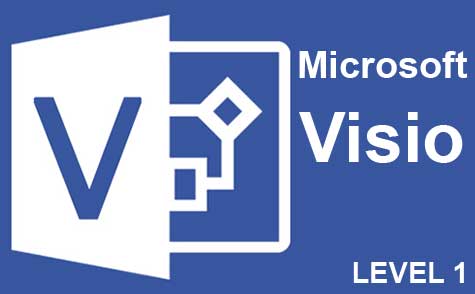 7 hours
0.7 CEUs
Microsoft Visio Level 1
+ More Info
7 hours
0.7 CEUs
Microsoft Visio Level 1
+ More Info
-
 6 hours
0.6 CEUs
Debt Reduction
+ More Info
6 hours
0.6 CEUs
Debt Reduction
+ More Info
-
 6 hours
0.6 CEUs
Gender Sensitivity Training
+ More Info
6 hours
0.6 CEUs
Gender Sensitivity Training
+ More Info
-
 6 hours
0.6 CEUs
General Receptionist
+ More Info
6 hours
0.6 CEUs
General Receptionist
+ More Info
-
 5 hours
0.5 CEUs
Home Business
+ More Info
5 hours
0.5 CEUs
Home Business
+ More Info
-
 9 hours
0.9 CEUs
Resume Writing 101
+ More Info
9 hours
0.9 CEUs
Resume Writing 101
+ More Info
-
 4 hours
0.4 CEUs
Slack
+ More Info
4 hours
0.4 CEUs
Slack
+ More Info
-
 8 hours
0.8 CEUs
Administrative Assistant 101
+ More Info
8 hours
0.8 CEUs
Administrative Assistant 101
+ More Info
-
 15 hours
1.5 CEUs
Customer Service 101
+ More Info
15 hours
1.5 CEUs
Customer Service 101
+ More Info
-
 12 hours
1.2 CEUs
Advertising, Marketing and Sales Writing
+ More Info
12 hours
1.2 CEUs
Advertising, Marketing and Sales Writing
+ More Info
-
 6 hours
0.6 CEUs
Freelance Writing 101
+ More Info
6 hours
0.6 CEUs
Freelance Writing 101
+ More Info
-
 8 hours
0.8 CEUs
Strategic Planning
+ More Info
8 hours
0.8 CEUs
Strategic Planning
+ More Info
-
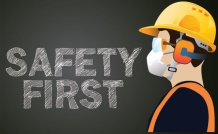 5 hours
0.5 CEUs
Workplace Safety
+ More Info
5 hours
0.5 CEUs
Workplace Safety
+ More Info
-
 6 hours
0.6 CEUs
Sustainable Development for Business
+ More Info
6 hours
0.6 CEUs
Sustainable Development for Business
+ More Info
-
 15 hours
1.5 CEUs
Economics 201
+ More Info
15 hours
1.5 CEUs
Economics 201
+ More Info
-
 3 hours
0.3 CEUs
Marketing Outreach
+ More Info
3 hours
0.3 CEUs
Marketing Outreach
+ More Info
-
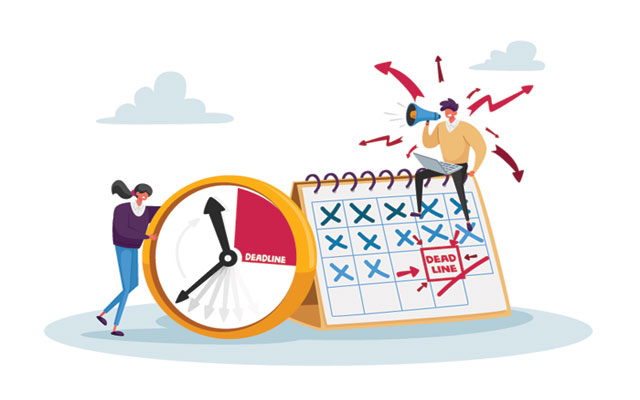 7 hours
0.7 CEUs
Time Management 101
+ More Info
7 hours
0.7 CEUs
Time Management 101
+ More Info
-
 6 hours
0.6 CEUs
Call Center Management
+ More Info
6 hours
0.6 CEUs
Call Center Management
+ More Info
-
 7 hours
0.7 CEUs
Cross-Cultural Communication
+ More Info
7 hours
0.7 CEUs
Cross-Cultural Communication
+ More Info
-
 5 hours
0.5 CEUs
Running Effective Meetings
+ More Info
5 hours
0.5 CEUs
Running Effective Meetings
+ More Info
-
 5 hours
0.5 CEUs
Mastering Conversation Skills
+ More Info
5 hours
0.5 CEUs
Mastering Conversation Skills
+ More Info
-
 7 hours
0.7 CEUs
Creating an Effective Sales Team
+ More Info
7 hours
0.7 CEUs
Creating an Effective Sales Team
+ More Info
-
 7 hours
0.7 CEUs
Understanding Financial Statements
+ More Info
7 hours
0.7 CEUs
Understanding Financial Statements
+ More Info
-
 14 hours
1.4 CEUs
Report Writing 101
+ More Info
14 hours
1.4 CEUs
Report Writing 101
+ More Info
-
 7 hours
0.7 CEUs
Negotiation Skills
+ More Info
7 hours
0.7 CEUs
Negotiation Skills
+ More Info
-
 8 hours
0.8 CEUs
Virtual Assistant 101
+ More Info
8 hours
0.8 CEUs
Virtual Assistant 101
+ More Info
-
 7 hours
0.7 CEUs
Financial Analysis 101: Planning and Control
+ More Info
7 hours
0.7 CEUs
Financial Analysis 101: Planning and Control
+ More Info
-
 5 hours
0.5 CEUs
Team Building 101
+ More Info
5 hours
0.5 CEUs
Team Building 101
+ More Info
-
 5 hours
0.5 CEUs
Communicating with Diplomacy and Tact
+ More Info
5 hours
0.5 CEUs
Communicating with Diplomacy and Tact
+ More Info
-
 5 hours
0.5 CEUs
Lawful Employee Termination
+ More Info
5 hours
0.5 CEUs
Lawful Employee Termination
+ More Info
-
 7 hours
0.7 CEUs
Sensitivity Training for the Workplace
+ More Info
7 hours
0.7 CEUs
Sensitivity Training for the Workplace
+ More Info
-
 5 hours
0.5 CEUs
Operations Management 101
+ More Info
5 hours
0.5 CEUs
Operations Management 101
+ More Info
-
 11 hours
1.1 CEUs
Landlord 101: Managing Rental Properties
+ More Info
11 hours
1.1 CEUs
Landlord 101: Managing Rental Properties
+ More Info
-
 10 hours
1.0 CEUs
Mastering Sales Skills 101
+ More Info
10 hours
1.0 CEUs
Mastering Sales Skills 101
+ More Info






